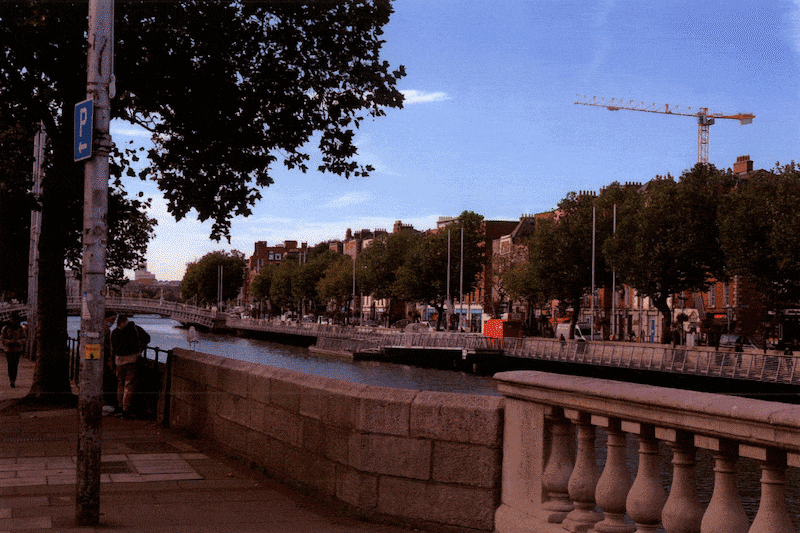Opponents of a proposed high-rise apartment block close to the Ha’penny Bridge in Dublin claim it would be “a visual pollutant” on the city’s skyline as well as threatening the future of a popular live music venue.
One city councillor claimed the eight-story building on the Woollen Mills site on the Liffey quays would represent “a carbuncle” and spoil views of crossing the Ha’penny Bridge, while the owners of The Grand Social on Liffey Street claim the development could affect the venue’s commercial viability.
An Taisce has also criticised the proposal which it claims is attempting to “shoehorn” an eight-storey tower on a site located in the best preserved section of the city’s quays and would represent “an appalling precedent.”
Developers SRM Brook and Cook have sought planning permission from Dublin City Council to construct an eight-storey apartment block on part of the existing Woollen Mills site on the corner of Ormond Quay and Liffey Street Lower.
RM Block
The 28-metre high building will provide six three-bed apartments and one two-bed unit with a communal roof area as well as a restaurant at ground floor level.
Consultants acting for the developer claim the proposed development was designed “to harmonise” with the immediate surrounding area while creating “a distinct, high-quality structure which adds visual interest to the area.”

They claimed the development would not be “injurious” to the conservation area around the city’s quays as it would be set back from the River Liffey.
In a submission to the council, the consultants said the development was appropriate and in accordance with planning policy and noted the area will undergo change in the near future as Dublin City Council has approved the pedestrianisation of Liffey Street Lower.
They also pointed out that ministerial guidelines on building heights in urban areas, which allow for increased heights over existing limits in certain circumstances, take precedence over height restrictions in the Dublin City Development Plan.
However, independent councillor, Mannix Flynn, said the proposed building constituted “gross overdevelopment of a sensitive, iconic site.”
“Its impact, if allowed go ahead, would undermine the integrity of this unique corner of Dublin,” said Mr Flynn.
He added: “It will take away from the good visual impact one gets when crossing the Ha’penny Bridge from south to north.”
Mr Flynn said the development had neither artistic nor architectural merit and represented “a carbuncle while destroying an original city gem.”
The councillor claimed he had been contacted by many businesses and residents from the area who were concerned that it would lead to “an avalanche of speculative developments that are nothing to do with place-making or community.”
While Mr Flynn acknowledged the shortage of housing in Dublin, he said it was unclear if the apartments would be for sale or rent but said it was unlikely they would be offered to local people.
He called on the developer to “go back to the drawing board” and provide plans that would enhance the neighbourhood, living community and cultural offering.
Opposing the development, An Taisce said it was “visually obtrusive” and would affect several protected structures including the Woollen Mills and Winding Stair bookshop and café.
An Taisce’s planning officer for Dublin city, Kevin Duff, said the proposal showed “an acute lack of sensitivity to the existing special environment of the quays.”
“This is the wrong place for a pop-up tower,” he added.
Meanwhile, the owners of The Grand Social, which has operated as a music venue on Liffey Street for over 10 years, said the proposed development and associated demolition of several buildings would have a profoundly negative impact on its business.
They also expressed concern that the developer of the “speculative and uninspiring” proposal had not considered the suitability of juxtaposing seven luxury apartments beside a late-night music venue.
They claimed there was an obligation on any new development adjoining the venue to ensure it was adequately protected from noise from The Grand Social but there had been no noise impact assessment carried out for the project.
A ruling on the application is expected in early March.













